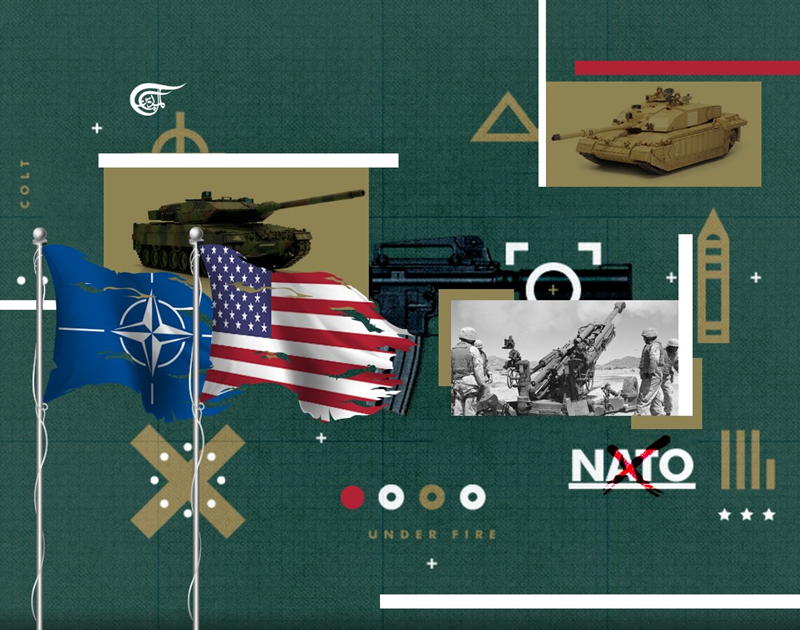


The long-awaited Ukrainian counteroffensive has arrived. The Zelensky administration has spent months securing financial and military support for what could be Ukraine’s last chance to take back lost territory. In this war drive, the Armed Forces of Ukraine have obtained German Leopard tanks, American Bradleys, Polish Krabs, and various armored personnel carriers and artillery systems. NATO’s finest conventional weapons of war are now being employed daily by Ukrainian troops.
However, instead of repelling Russia and reclaiming lost territory, images shared widely online are showing the exact opposite: destroyed tanks, abandoned personnel carriers, and no serious breaches of the Russian defensive line – for now.
For months leading up to this long-awaited counteroffensive, the supply of NATO weaponry dominated Western headlines. The German Leopards were supposed to be a game changer. The American Bradleys were supposed to break the Russian line. The air defense systems were supposed to intercept any and all rocket and drone attacks.
Instead, reality has kicked in. No Russian defensive positions have been crushed yet, but the idea of NATO military supremacy surely has. In addition to last month’s destruction of the US-supplied Patriot air defense system, columns of NATO tanks lay in smoldering ruins, with perhaps even the Russians scratching their heads in confusion.
Until recently, NATO weapons had yet to truly be tested against an equal opponent. The history of NATO military involvement is limited to crushing movements for national sovereignty and genocidal bombing campaigns. It wasn’t until the outbreak of Russia’s Special Military Operation that NATO weaponry was forced to fight against military technology as up-to-date as its own. Russia’s military capabilities are still measured just short of the United States, but they are fighting the combined military technologies of NATO – which, in addition to the United States, includes the United Kingdom, France, Germany, Canada, and 25 other member countries.
Ironically, NATO technology has proven to be tougher when it wasn’t on the battlefield. Until the Special Military Operation, names like “The Leopard” or “Patriot System” or “HIMARS” struck fear into anyone in NATO’s way. Now, they have been rendered vulnerable for the world to see.
It was the mythology of NATO weaponry that made it allegedly superior. The Russians have busted that myth.
Joining the Russians are the Iranians. The Iranian Shahed-136 drone has been deployed dozens of times by Russia. Col. Rodion Kulagin, a Ukrainian artillery commander, commented that the loitering suicide drone “blew the triple-seven in half,” referencing the M777 Howitzer artillery system. Since the initial deployment of these drones, Russia has doubled down, adding it to its usual portfolio of offensive weaponry – breaking even the Patriot system defense in Kiev multiple times.
One can argue that perhaps the Ukrainians are not trained to use NATO weaponry considering that they are not a member of NATO. However, that is far from the truth. Numerous Ukrainian officers are in NATO countries learning various weapons systems and bringing back those skills to the front. Not only that but it is confirmed NATO officers themselves are in Ukraine overseeing training and logistics.
Military technology is expensive. It takes up a significant chunk of every country’s budget. NATO countries, in particular, have an obligation to spend a percentage of their GDP on NATO initiatives – primarily weaponry and training. Giving away dozens of tanks and artillery systems is not an easy investment. For this very reason, it would be a necessity for NATO members to train Ukrainian forces on how to properly operate NATO weaponry. And they would be incentivized to do so as well – when will NATO, a bloc created specifically to counter the Soviet threat, have an opportunity again to test their weapons against a modern army?
On the flip side, Russia has much to gain from its offensive maneuvers against Ukraine as well. Each abandoned or knocked-out NATO piece of armor can be brought back to Russian military scientists and backward-engineered to understand capabilities and weak points. This information can then be shared with countries looking to bulk up their defense capabilities ahead of a NATO-involved operation.
It also allows Russia to showcase its own weaponry. If Russian weapons are capable of piercing NATO defensive weapons, other countries may want to buy from Russia instead of, for example, the United States. This has been proven especially true for Iran. Russia’s usage of the Shahed 136 proved to be quite advantageous for Iran – over 20 countries have requested to purchase the Shahed system.
The more NATO throws at the Russians, the more NATO has to lose in the long term.
Despite the Western media war drive, despite the billions of dollars invested into Ukrainian weaponry and logistics, NATO is coming up short – and the world is watching. The crumbling image of US unipolarity is being supplemented by the crumbling image of perhaps the most powerful military bloc to ever exist.
The Ukrainian counteroffensive may gain territory in the coming weeks – or it may not at all – but one thing is certain. The images of destroyed NATO tanks and artillery will serve as a hideous scar on the war hawks of the West. This will no doubt create a level of panic within the walls of companies like Boeing and Raytheon – who were once hailed as military science champions.
As many world leaders have stated, the best course of action is a diplomatic approach to the war. Ukraine has unfortunately become a testing ground for NATO weaponry with its imposed proxy war on Russia. The tests are failing, Ukrainian lives are being sacrificed, and NATO countries are scrambling to find any positive spin to continue the war effort. Perhaps it’s best for them to count their losses and find common ground to avoid further carnage – and embarrassment.
Shabbir Rizvi Political analyst that specializes in US foreign and domestic policy, geopolitics, and military science; Anti-war organizer.